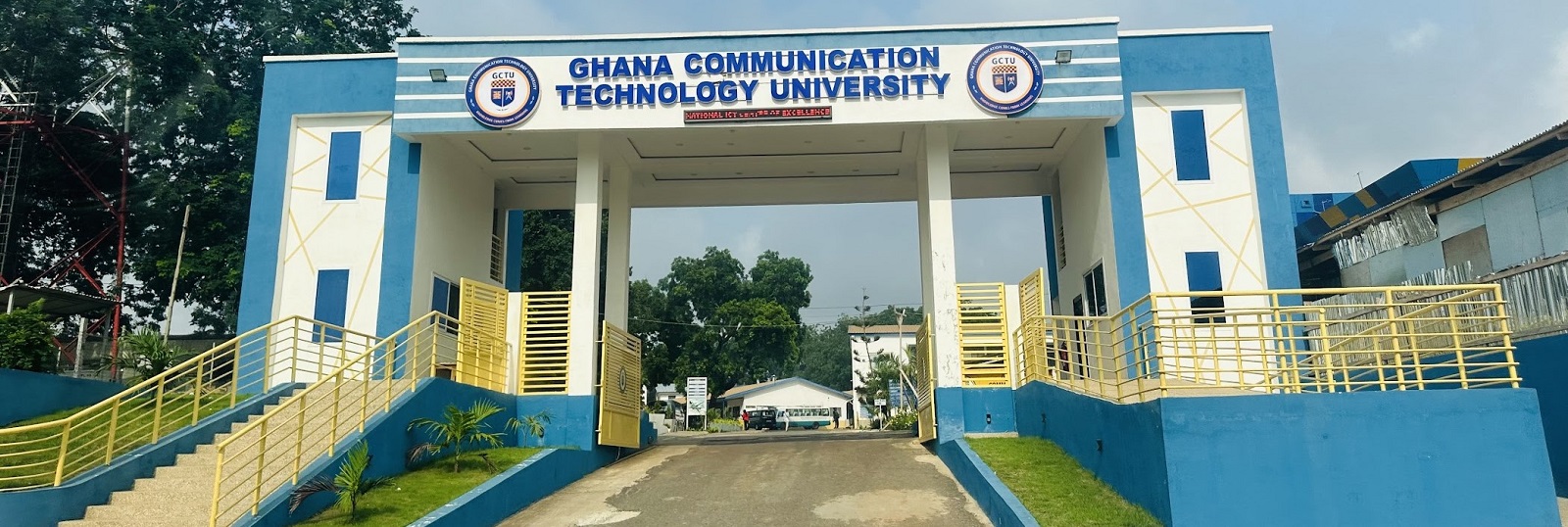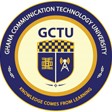GCTUSpace
The Ghana Communication Technology University Institutional Repository is a digital collection of scholarly and research outputs created by the university's faculty, students, and researchers. This repository provides open access to a wide range of materials, including articles, theses, dissertations, conference papers, books, and more.

Communities in GCTUSpace
Select a community to browse its collections.
Recent Submissions
Prediction of Telecommunication Network Outage time Using Multilayer Perceptron Modelling Approach
(Institute of Electrical and Electronics Engineers Inc., 2021) Oduro-Gyimah F.K.; Boateng K.O.; Adu P.B.; Quist-Aphetsi K.
As the demand in communication traffic grows; there should be the provision of reliable telecommunication network to users. Operators however, face a myriad of challenges in fulfilling their part of the contract such as network outage. The phenomenon of network outage has been a challenge that every network operator is consistently trying to avoid. In this study, a multilayer feedforward neural network also called multilayer perceptron (MLP) was adopted to model network outage time of network elements or systems. The MLP network was trained on a 150 samples of daily network outage time data obtained from the Network Operating Centre of an operator in Ghana. The data covered a period of 1st January to 30th May 2018 and was analysed with Matlab software. In developing the model, the input and output layers were kept constant, while the number of neurons were varied from 1 to 20 to obtain a good prediction. The performance of the models were measured by the Mean Squared Error (MSE), Root Mean Squared Error (RMSE) and the Correlation Coefficient (R). After careful and extensive training, validation and testing, 20 models were developed. The MLP selected was 1-4-1 which produced MSE, RMSE, and an R-value of 0.0000024321, 0.00160 and 0.99993 respectively with a prediction accuracy of 97.5%. The study concludes that downtime prediction can be improved by feed forward neural network optimized using Levenberg-Marquardt with sigmoid function in the hidden and linear activation function in the output layer. � 2021 IEEE
Analysis of Collocated Base Transceiver Stations and Associated Risks in Erecting Base Stations
(Institute of Electrical and Electronics Engineers Inc., 2021) Antwi O.A.; Owusu A.O.; Nanjo J.W.; Gidisu G.B.; Sackey D.; Mohammed H.
This paper deals with the study of collocation base station and the risk associated in mounting and erecting base stations (towers). The deployment and positioning of the base stations in the same geographic area (collocation zone) has been a prime concern resulting in interference and high radiation exposure. To reduce cost and the risk of erecting this tower. The research aims at analyzing the collocated base transceiver and carefully exploring the dangers in erecting the base stations. Data were collected on Collocated base transceiver station by different operators in Korley klotte on a particular site as collocated base station, the location of each base transceiver station was captured in the study area using the Ghana Post GPS mobile application. However, this data collected were analyzed using Microsoft excel and Statistical Package for Social Scientist's (SPSS). The findings of the study showed that the radiofrequency power density exposure hazard index in Korley Klotte was observed to be within the allowable 4.5w/m2 and 9w/m2 with corresponding frequencies of 10KHz and 30GHz exposure limit to the public as recommended by International Commission on Non-Ionizing Radiation Protection (ICNIRP). � 2021 IEEE
Maternity Management Information System for Katutura Hospital Maternity Department, Windhoek, Namibia
(Institute of Electrical and Electronics Engineers Inc., 2022) Ujakpa M.M.; Iyawa G.; Osakwe J.; Mutasa S.; Suresh N.; Sakeus S.; Cunningham M.; Cunningham P.
This project aimed at developing a maternity management information system for the Katutura Hospital. Applying the prototype methodology, the Maternity Management Information system was developed and was user friendly compared to the existing maternity system. The system allows patients to make appointments/book, make payment and get access to health information tips during the pregnancy period. The system has been tested and it works. Currently the system does not allow for medical aid integration and hence future development of similar systems or higher versions should consider integrating medical aid portals into the system. � 2022 IST-Africa Institute and Authors.
Use of Fuzzy Extent AHP based Decision Support System and Geographic Information System to Site Wind Turbines in a Sustainable Manner
(Institute of Electrical and Electronics Engineers Inc., 2019) Brown-Acquaye W.; Lempogo F.; Arthur J.K.; Anekwe E.K.
In this paper we use the fuzzy extent analytic hierarchy process (AHP) and the ArcGIS geographical information system to develop a decision support tool to aid stakeholders select the most suitable and sustainable site for a wind turbine farm in Zamfara State, Nigeria. We use fuzzy sets and fuzzy numbers to deal with vagueness of human thought in the selection process and develop the problem hierarchy with the various criteria which will be evaluated to obtain the fuzzy comparison matrices which are then used to calculate of fuzzy synthetic extents. The comparison of fuzzy synthetic extents, the evaluation of the minimum degree of possibilities. and normalization of weight vectors are done to aggregate the local weights to obtain scores and ranking of the alternative sites for the wind turbine. We then use the weighted linear combination technique in ARCGIS to generate raster suitability maps and produce a composite suitability map for the turbine sites as output. � 2019 IEEE.
A Writer-Dependent Approach for Offline Signature Verification Using Feature Learning and One-Class Support Vector Machine
(Institute of Electrical and Electronics Engineers Inc., 2023) Tanko O.; Senkyire I.B.; Kwao K.; Aluze-Ele S.H.A.; Boahen E.K.; Frimpong S.A.
In many administrative and financial entities, signatures are frequently employed to confirm a person's identification as well as the authenticity of various documents. Being a biometric characteristic, a signature is a fairly secure form of identification. Hence, efforts are being made to continually raise the bar for the security signatures, particularly by creating effective procedures for verifying signatures. Both traditional and automatic techniques have been used to verify signatures, whiles the former has recorded moderately accurate results, the latter in recent studies have demonstrated great success in separating authentic signatures from forgeries. The purpose of this work is to explore the implementation and deployment of offline writer-dependent signature verification systems, by proposing a model that can greatly minimize computation while simultaneously increasing accuracy, to achieve this, we propose combining the VGG-16 architecture as a feature extractor with a One-Class Support Vector Machine (OC-SVM) as a writer-dependent classifier. � 2023 IEEE.
